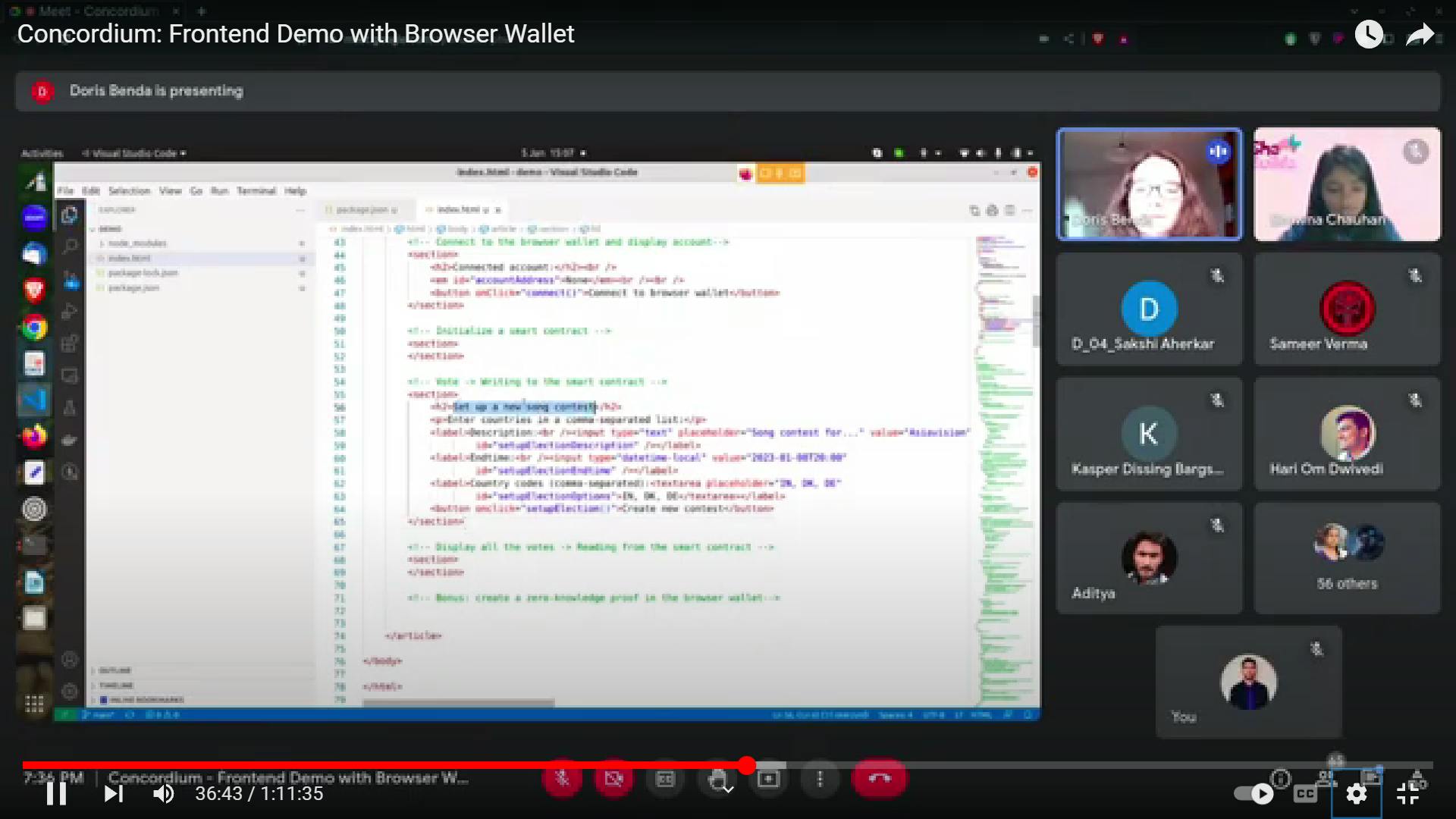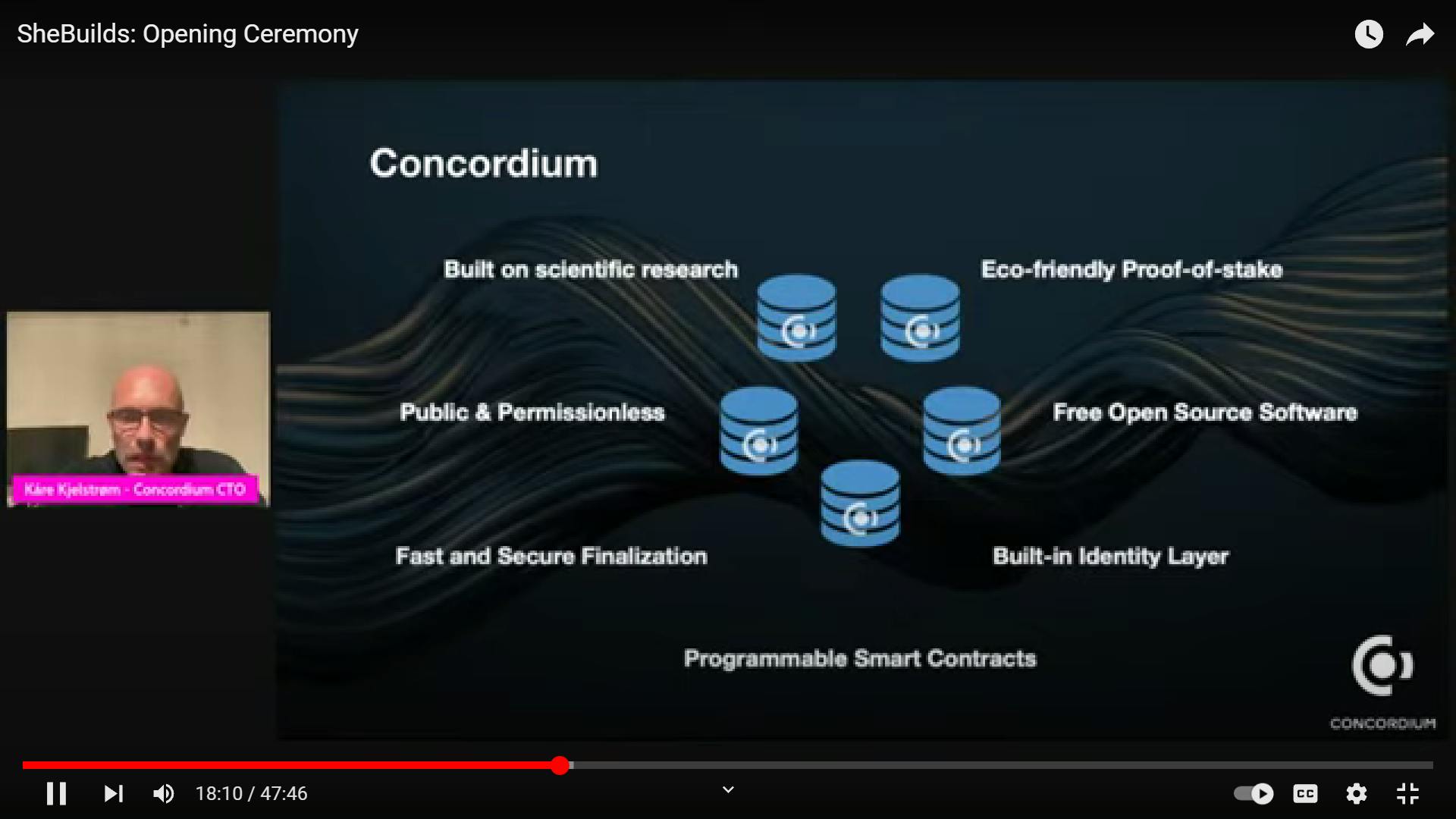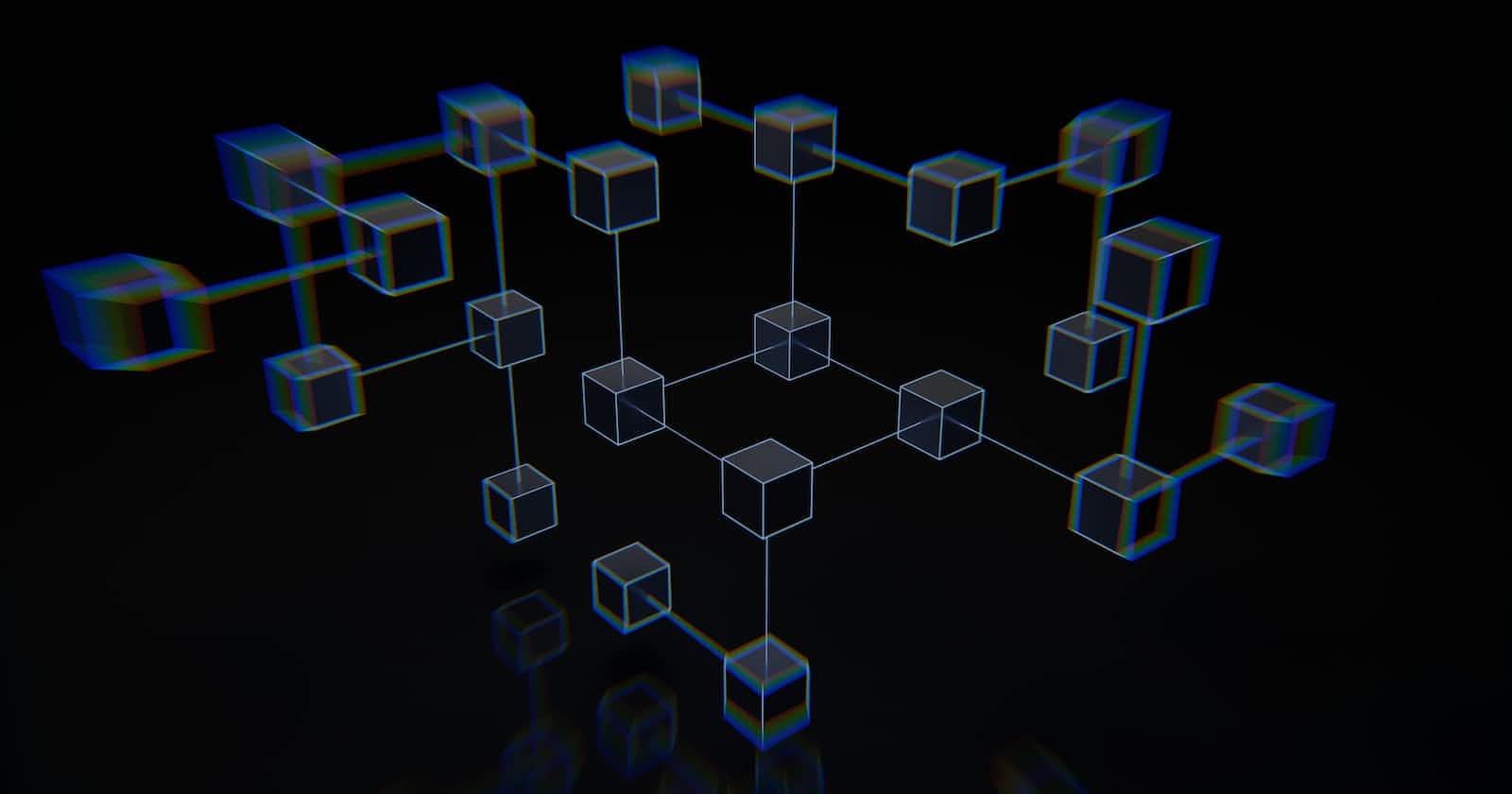#shebuilds #hashnode #concordium
I recently had the opportunity to attend a series of workshops hosted by Concordium, a public layer 1 blockchain designed to balance privacy with accountability through its ID layer. The workshops were led by various members of the Concordium team, including Kasper and Doris, and were focused on topics such as blockchain development, smart contracts, and DeApps.
Blockchain development: This refers to the process of building applications or services using blockchain technology. This can include creating smart contracts, which are self-executing contracts with the terms of the agreement between buyer and seller being directly written into lines of code. It can also involve developing decentralized applications (DeApps), which are applications that run on a decentralized network (such as a blockchain) and do not rely on a single point of control.
Smart contracts: A smart contract is a programmable digital contract that can automatically enforce the terms of an agreement. They can be used to facilitate, verify, and enforce the negotiation or performance of a contract. Smart contracts can be used in a variety of contexts, such as supply chain management, real estate, and voting systems.
De-Apps : (decentralized applications): DeApps are applications that run on a decentralized network (such as a blockchain) and do not rely on a single point of control. They are often built using smart contracts and can be used for a wide range of purposes, such as creating marketplaces, managing supply chains, and enabling peer-to-peer lending.
On the first day of the workshops, Kasper assisted the attendees in setting up their development environments, which would allow them to write, test, and deploy smart contracts on the Concordium network. He explained how the Concordium network operates and provided an overview of its key features and functions.
To demonstrate the capabilities of the Concordium network, Kasper created a simple voting smart contract. This smart contract allowed multiple people to cast their votes securely on the blockchain, without revealing who made which vote. The smart contract was designed to ensure that all votes were recorded accurately and that the results were transparent and verifiable.
Kasper also provided an in-depth explanation of how the voting smart contract worked and answered questions from the attendees about its functionality and potential applications. Overall, the first day of the workshops was focused on introducing the attendees to the Concordium network and familiarizing them with its key features and capabilities.
Concordium: Protocol Overview and Smart Contracts

On the second day of the project, Doris took over and guided the development of a decentralized application (DApp) on a smart contract. A DApp is a software application that runs on a decentralized network, such as a blockchain. A smart contract is a self-executing contract with the terms of the agreement between buyer and seller being directly written into lines of code. The smart contract allows for the automation of contract execution, eliminating the need for intermediaries. Doris led the team through the process of creating and deploying the DApp on the blockchain, which involved writing and testing the smart contract code and making sure it was secure and functional.
A decentralized application (DApp) is a software application that runs on a decentralized network. A smart contract is a self-executing contract with the terms of the agreement between buyer and seller being directly written into lines of code. The code and the agreements contained therein are stored and replicated on a blockchain network.
Developing a DApp on a smart contract can involve several steps, such as:
Defining the purpose and functionality of the dApp.
Designing the user interface and user experience.
Writing the smart contract code in a programming language such as Solidity (for Ethereum).
Testing the smart contract to ensure that it is working as intended.
Deploying the smart contract to the blockchain.
Interacting with the smart contract through a front-end application or user interface.
Doris may have gone through some or all of these steps as part of guiding you through the development of a DApp on a smart contract.
Concordium: Frontend demo with Browser Wallet


On the third and final day of the conference, the CEO of Concordium took the stage to present their vision for the future of the platform. They highlighted the many possibilities for building innovative projects on Concordium, explaining how the platform's unique features and technology could be used to solve a wide range of problems and create new opportunities.
The CEO emphasized the importance of collaboration and community in driving the success of Concordium and talked about the various ways that developers, businesses, and other stakeholders could get involved and contribute to the platform's growth and development. They also shared some exciting updates on the progress of the Concordium network and the upcoming launch of the mainnet.
Overall, the presentation was well-received by the audience and generated a lot of excitement and enthusiasm for the future of Concordium and the endless possibilities it offers for building innovative projects.

In conclusion, the workshops on blockchain development provided by the Concordium team were invaluable experiences. They gave a comprehensive introduction to the world of blockchain technology and allowed me to gain a deeper understanding of the concepts and principles involved. The guidance and support provided by the team were instrumental in my learning and I am grateful for the opportunity to have participated in these workshops. Overall, I believe that the skills and knowledge gained from these workshops will be crucial as I continue to explore and work with blockchain technology in the future.

